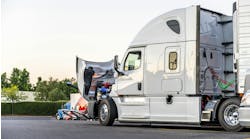The Environmental Protection Agency (EPA) and International Truck and Engine Corp. have entered into a testing and development partnership aimed at advancing the clean diesel combustion (CDC) technology for low-emission diesel engines.
The partnership, according to the two organizations, will seek to incorporate environmentally sound technologies in economical packages. The partners noted that “commercial viability” of CDC will be determined jointly.
CDC technology uses in-cylinder control of nitrous oxide (NOx) emissions to reduce or eliminate the need for aftertreatment systems to reduce NOx.
International said it is evaluating CDC for use in its product line, starting with a V-6 diesel sized for SUVs and pickup trucks. That engine is currently under laboratory testing by EPA.
“That black puff of diesel smoke we have come to know will be the thing of the past,” said Mike Leavitt, EPA administrator. “But we have to maintain our economic competitiveness and protect our environment in such a way that does not interfere with this.”
Jack Allen, president of International's engine group said he expects CDC will be implemented successfully at the commercial and retail levels. “This technology provides economic advantages, and benefits public health and safety,” Allen said. “CDC technology will help grow our business.”
International is also looking into ways to adapt the technology for heavy-duty vehicles, with a Class-8 offering tentatively scheduled to debut as early as 2010.
According to Ward's Automotive Reports, the ability of CDC to avoid use of “NOx traps” is crucial since the cost of such emissions aftertreatment is often the reason why auto makers say they're reluctant to launch high-volume diesel car and light-truck programs in North America.


